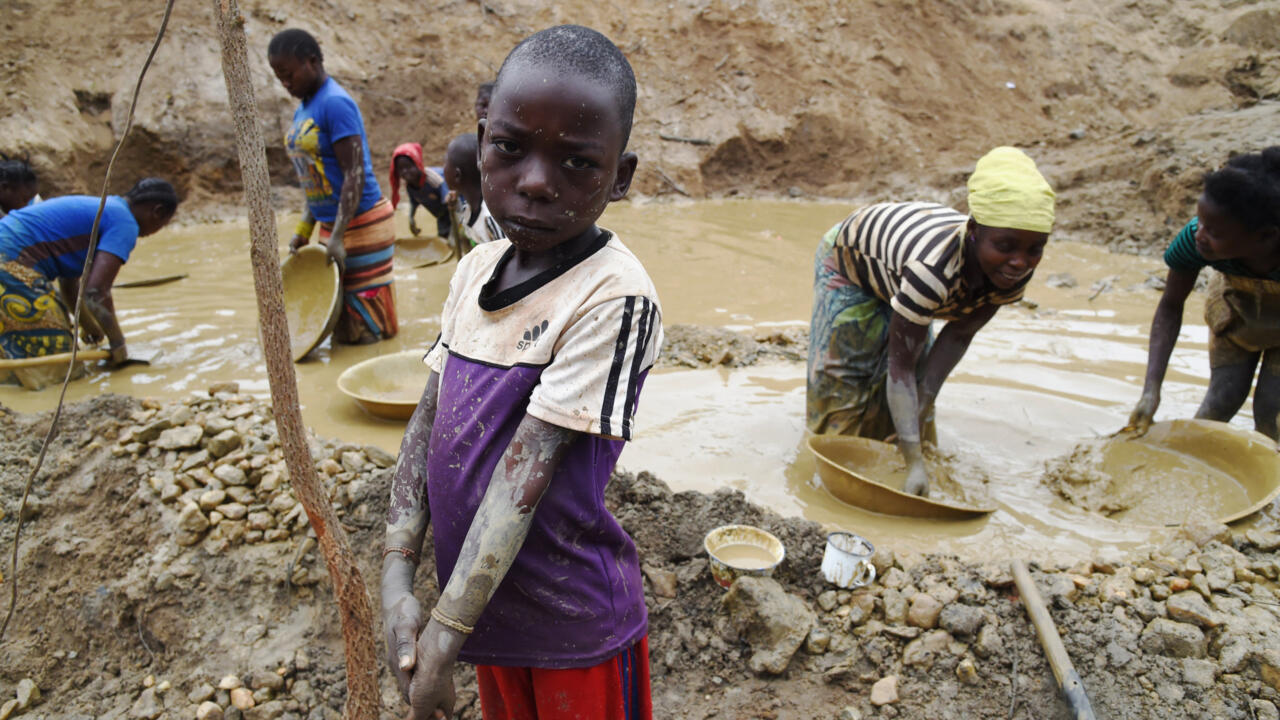Recovery Readiness Framework and Assessment Tool – ReliefWeb

Report on the Recovery Readiness Framework and its Contribution to Sustainable Development Goals
Introduction and Strategic Context
The International Recovery Platform (IRP), in collaboration with the G20 Disaster Risk Reduction Working Group (DRRWG) and other knowledge partners, has developed the Recovery Readiness Framework and Assessment Tool. This initiative provides a structured methodology for governments to evaluate and enhance their preparedness for post-disaster recovery. The framework is designed to directly support the achievement of the Sustainable Development Goals (SDGs) by building national resilience and ensuring that recovery efforts contribute to long-term sustainable development, particularly in the face of increasing climate-related disasters.
The tool’s development was informed by a global consultation process, ensuring its relevance and applicability across diverse regions. Its structure is organized into four primary domains, which are further detailed through 12 Areas of Measurement and 65 Key Performance Indicators.
Alignment with Core Sustainable Development Goals
The framework’s core function is to strengthen national systems, which directly contributes to several key SDGs:
- SDG 11 (Sustainable Cities and Communities): By enabling governments to identify and address weaknesses in recovery systems, the tool helps build resilient infrastructure and fosters the development of safe, resilient, and sustainable human settlements capable of withstanding and recovering from shocks.
- SDG 13 (Climate Action): The framework is a critical instrument for climate adaptation. It prepares countries to manage the impacts of climate-related disasters and improves their capacity to access climate finance, such as the Fund for Responding to Loss and Damage, by demonstrating robust recovery preparedness.
- SDG 16 (Peace, Justice and Strong Institutions): A central focus of the tool is the assessment of governance structures. By strengthening coordination, clarifying roles, and building institutional capacity, it promotes effective, accountable, and inclusive institutions at all levels, which are fundamental for managing complex recovery processes.
- SDG 17 (Partnerships for the Goals): The framework was born from a global partnership and inherently promotes multi-stakeholder collaboration. It encourages coordination between disaster management, finance, infrastructure, and local government entities to achieve cohesive and effective recovery outcomes.
Strategic Benefits for Advancing the 2030 Agenda
The implementation of the Recovery Readiness Framework and Assessment Tool offers countries specific, actionable benefits that accelerate progress towards the SDGs. These benefits are categorized as follows:
- Proactive Gap Identification for Resilient Development: The tool allows for a comprehensive assessment of readiness across governance, finance, capacity, and data systems. This pre-disaster analysis enables the targeted strengthening of national systems, preventing development setbacks and protecting vulnerable populations, in line with SDG 1 (No Poverty) and SDG 11.
- Formulation of Actionable Improvement Plans: Assessment results are translated into prioritized action plans. This strategic approach ensures that efforts to enhance recovery preparedness are systematic and contribute directly to national development and resilience objectives.
- Strengthening Institutional Coordination for Effective Governance (SDG 16 & 17): The framework facilitates dialogue and alignment among key government and non-government stakeholders. This enhances coordination and clarifies responsibilities, leading to more efficient and equitable recovery processes.
- Improved Access to Sustainable and Climate Financing (SDG 13): By demonstrating a systematic and transparent approach to recovery preparedness, countries can strengthen their case for accessing pre-arranged financing and dedicated climate funds, mobilizing critical resources for resilient recovery.
- Building Implementation Capacity for Long-Term Sustainability: The IRP supports the development of institutional and human capacity through targeted technical assistance and peer-to-peer learning. This builds a sustainable foundation for managing future disasters and integrating risk reduction into all development planning.
- Monitoring Progress Towards Resilience Goals: The framework’s standardized indicators allow countries to track their progress in enhancing recovery readiness over time. This supports adaptive management and ensures continuous improvement in national resilience, contributing to the long-term achievement of SDG 11 and SDG 13.
1. Which SDGs are addressed or connected to the issues highlighted in the article?
The article on the Recovery Readiness Framework and Assessment Tool connects to several Sustainable Development Goals (SDGs) centered around disaster risk reduction, resilience, and international cooperation.
-
SDG 1: No Poverty
Disasters often disproportionately affect the poorest and most vulnerable populations, pushing them further into poverty. By helping governments prepare for effective recovery, the framework aims to mitigate the long-term socio-economic impacts of disasters, thus contributing to poverty reduction and protecting developmental gains.
-
SDG 11: Sustainable Cities and Communities
This goal directly addresses making human settlements resilient. The framework’s core purpose is to help countries prepare for disasters, which is a key component of building resilient infrastructure and communities capable of withstanding and recovering from shocks.
-
SDG 13: Climate Action
The article explicitly mentions improving eligibility for climate funds like the “Fund for Responding to Loss and Damage.” This directly links disaster recovery readiness to climate change adaptation and strengthening resilience against climate-related hazards, which are central themes of SDG 13.
-
SDG 17: Partnerships for the Goals
The development and implementation of the framework are rooted in partnership. The article notes its creation by the International Recovery Platform (IRP) with partners, in response to a G20 request, and involving global consultations. It also facilitates peer learning and technical assistance, embodying the collaborative spirit of SDG 17.
2. What specific targets under those SDGs can be identified based on the article’s content?
The article’s focus on a structured approach to disaster recovery preparedness allows for the identification of several specific SDG targets.
-
Target 1.5: Build the resilience of the poor and those in vulnerable situations and reduce their exposure and vulnerability to climate-related extreme events and other economic, social and environmental shocks and disasters.
The framework’s objective to “identify gaps before a disaster” and create “actionable improvement plans” is a direct effort to build national and local resilience, which in turn protects vulnerable populations from the severe impacts of disasters.
-
Target 11.5: Significantly reduce the number of deaths and the number of people affected and substantially decrease the direct economic losses relative to global gross domestic product caused by disasters.
By enabling governments to have robust recovery systems in place before a disaster strikes, the framework helps minimize the chaos and economic disruption that follow a disaster, thereby reducing its overall human and economic toll.
-
Target 11.b: Substantially increase the number of cities and human settlements adopting and implementing integrated policies and plans towards… resilience to disasters.
The “Recovery Readiness Framework and Assessment Tool” is precisely the type of integrated plan this target promotes. It provides a structured approach for governments to assess and improve their disaster recovery policies and institutional arrangements.
-
Target 13.1: Strengthen resilience and adaptive capacity to climate-related hazards and natural disasters in all countries.
The tool directly supports this target by providing a mechanism to “assess current readiness” and “build implementation capacity.” The mention of accessing climate funds further reinforces its role in enhancing adaptive capacity to climate-related disasters.
-
Target 17.9: Enhance international support for implementing effective and targeted capacity-building in developing countries.
The article states that the framework helps to “Build implementation capacity” through “targeted training, technical assistance, and peer learning facilitated by the International Recovery Platform,” which is a clear example of the capacity-building efforts described in this target.
3. Are there any indicators mentioned or implied in the article that can be used to measure progress towards the identified targets?
Yes, the article explicitly mentions a comprehensive set of indicators used by the framework to measure progress.
-
Explicitly Mentioned Indicators
The article states that the framework “organizes recovery readiness into 4 Domains, 12 Areas of Measurement, and 65 Key Performance Indicators.” These indicators are the core of the assessment tool.
-
Purpose of the Indicators
The purpose of these indicators is clearly defined. They are used to:
- Assess current readiness: The indicators help “assess current readiness across governance, finance, capacity, and data systems to pinpoint specific weaknesses.”
- Monitor progress over time: The framework allows countries to “Track improvements in recovery readiness using standardized indicators, enabling countries to measure advancement and adjust strategies as needed.”
Therefore, these 65 Key Performance Indicators serve as the direct metrics for measuring a country’s progress in achieving disaster recovery readiness, which in turn contributes to the identified SDG targets.
4. Create a table with three columns titled ‘SDGs, Targets and Indicators” to present the findings from analyzing the article.
| SDGs | Targets | Indicators |
|---|---|---|
| SDG 1: No Poverty | Target 1.5: Build the resilience of the poor and reduce their vulnerability to climate-related extreme events and other shocks and disasters. | The article mentions a comprehensive set of “65 Key Performance Indicators” within the Recovery Readiness Framework. These indicators are used to assess and monitor progress across four domains: governance, finance, capacity, and data systems. They serve as the primary tool to measure improvements in recovery readiness. |
| SDG 11: Sustainable Cities and Communities | Target 11.5: Significantly reduce deaths, affected people, and economic losses from disasters. Target 11.b: Increase the number of cities implementing integrated policies and plans for disaster resilience. |
|
| SDG 13: Climate Action | Target 13.1: Strengthen resilience and adaptive capacity to climate-related hazards and natural disasters. | |
| SDG 17: Partnerships for the Goals | Target 17.9: Enhance international support for effective and targeted capacity-building in developing countries. |
Source: reliefweb.int
What is Your Reaction?
 Like
0
Like
0
 Dislike
0
Dislike
0
 Love
0
Love
0
 Funny
0
Funny
0
 Angry
0
Angry
0
 Sad
0
Sad
0
 Wow
0
Wow
0
















































:focal(1500,1000)/https://media.globalcitizen.org/a6/9a/a69a4720-d8a1-4715-b596-18738d03c05c/rotary_polio_hero_image.jpg?#)







/countries/sri-lanka/photo-credit---dmc-sri-lanka.tmb-1200v.jpg?sfvrsn=dc298bcc_1#)



















